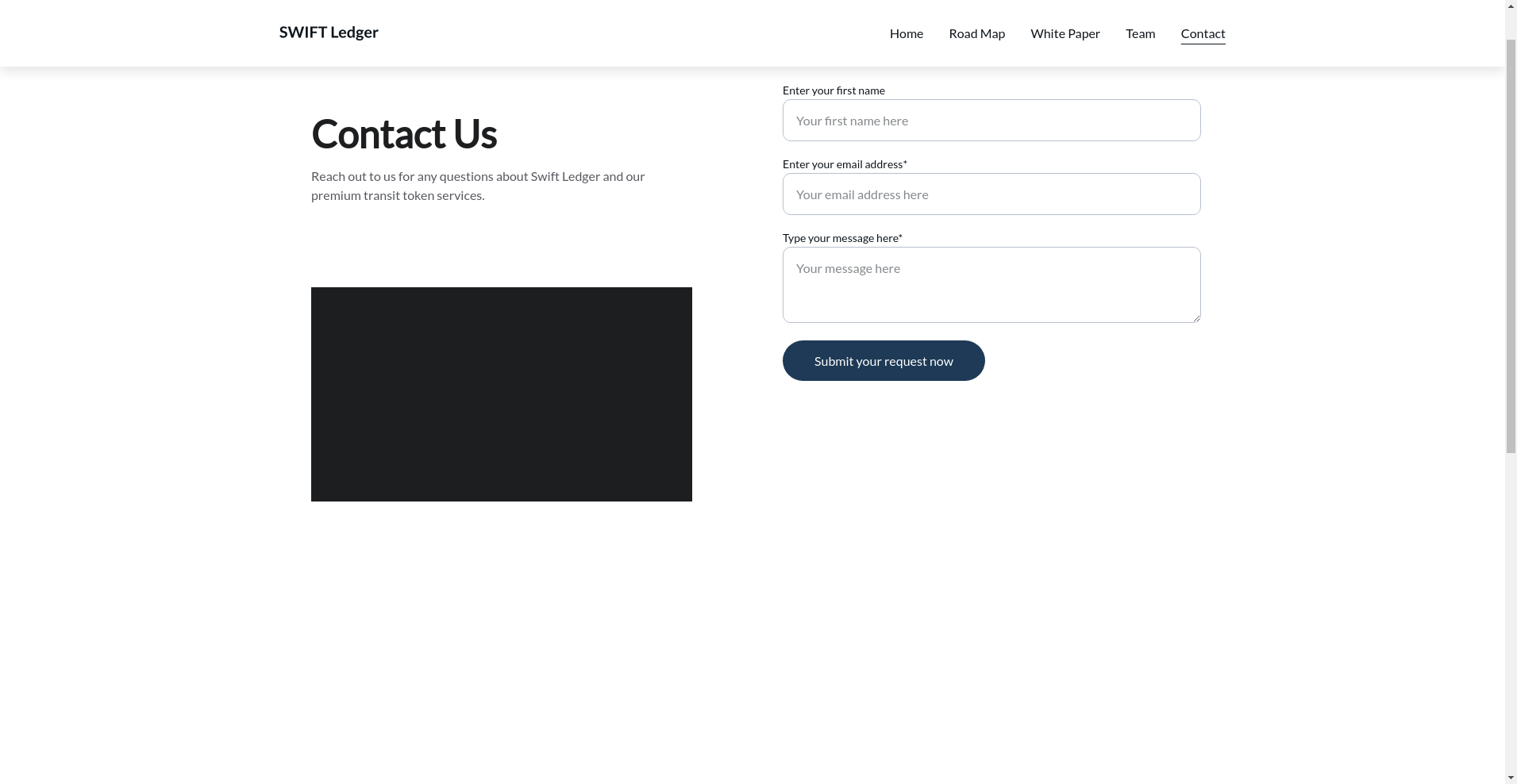SWIFT ($SWFT) Review: A Data-Driven Legitimacy and Risk Assessment of the Solana-Based Payment Project

What Is SWIFT: An Introduction
SWIFT is a blockchain project built on the Solana network, designed to streamline and enhance payment efficiency through its proprietary token, $SWFT. Its core mission revolves around reducing transaction fees and increasing processing speeds, positioning itself as a premium transit token for payment services. The project emphasizes scalability, security, and utility within the Solana ecosystem, actively developing features aimed at solidifying its role in decentralized payments.
This impartial review examines SWIFT's technical infrastructure, team credibility, security posture, economic design, and real-world ecosystem activity to assess its legitimacy and potential risks for investors or users interested in its future trajectory.
Team and Roadmap Evaluation
The SWIFT project claims to operate with a team comprising experienced members drawn from diverse backgrounds in startups, finance, and technology. Notably, the available public information highlights individual contributors such as CEO Shahzaib Akram, who maintains active social profiles like LinkedIn and Telegram, signaling a degree of transparency. However, the overall team visibility remains limited, which is common in early-stage projects but warrants cautious scrutiny from an investor’s perspective.
The roadmap indicates ongoing development with a focus on enhancing payment efficiency on Solana. Key milestones include:
- Phase 2 Completion: Progressing toward deployment of core functionalities on Solana.
- Phase 3 Upcoming: Aiming to build further improvements in transaction speed and fee reduction.
- Security Commitments: Locking liquidity and supply to foster trust and stability.
While the milestones suggest a structured development plan, the execution risk remains elevated until tangible deliverables are achieved, especially given the short public track record and limited team information.
SWIFT Security Audit Results
The assessment of SWIFT's security posture relies solely on the Cyberscope audit report, which indicates a high security score of approximately 94.4%. This suggests that, at least from a technical standpoint, the project’s smart contracts and implementation have passed basic security checks. Nevertheless, the audit highlights a high criticality flaw identified during the assessment, flagged as “high_criticality: true,” implying a potentially significant vulnerability or flaw that may pose risks if exploited. This situation underscores the impact of critical security flaws.
- Audit Focus: Token contract security with a focus on vulnerabilities.
- Major Findings: Presence of a critical flaw that warrants immediate validation and remediation.
- Decentralization & Community Score: Scores are moderate to high, but they don’t fully eliminate the risk of centralized points of failure.
Given the reliance on a single audit source, the overall technical security confidence is tempered by the critical flaw. This underscores the necessity for ongoing audits and transparency about identified issues and their resolution to genuinely ensure safety for holders and users.
A Breakdown of SWIFT Tokenomics
The utility of $SWFT as a token seems centered around facilitating transactions, staking, and liquidity provision within its ecosystem. A comprehensive view of its tokenomics reveals:
- Total Supply: 349,995,213 SWFT tokens, with notable supply lock mechanisms via LP Locks on Raydium, implying efforts to prevent immediate large sell-offs.
- Token Standard: SPL tokens on Solana, with 9 decimals, aligning with Solana’s standard protocol.
- Allocation & Vesting: Details on team, advisors, and community allocations are absent; the absence suggests the need for further transparency to assess inflation and distribution risks.
- Utility & Use Cases: Aimed at enabling efficient payments, staking rewards, and supporting liquidity pools.
- Economic Model: The use of supply locks and liquidity pools indicates efforts to stabilize price and prevent inflationary spiral—however, low trading volume (currently zero) signals limited market adoption at present.
The tokenomics structure appears relatively sound on paper but must be validated by actual trading activity and demand. The moderate supply and lock mechanisms suggest an intent to foster stability, yet the lack of trading volume or active markets introduces risks regarding liquidity and price discovery.
Assessing SWIFT's Development and Ecosystem Activity
Despite limited public data on active development or user engagement, SWIFT’s presence on platforms like Dexscreener, Dextools, and Solscan indicates that the token is tradable within decentralized exchanges on Solana. The ongoing listing on prominent aggregators like CoinGecko and the upcoming inclusion on CoinMarketCap suggest concerted efforts toward visibility and recognition.
Community engagement appears modest, with a Telegram group comprising approximately 924 members and minimal social media following on X/Twitter. The project's development milestones, highlighted by their roadmap and platform integrations, suggest genuine progress; however, the absence of large-scale user adoption metrics or active dApp deployments leaves the ecosystem's traction somewhat limited at this stage.
In conclusion, while the project demonstrates technical progression, real-world utility and adoption remain nascent, posing potential risk factors for early investors or users relying on its ecosystem growth.
The Fine Print: Analyzing SWIFT's Terms
From the available documentation, no overtly risky clauses or legal red flags are evident. The adoption of standard open-source or open-access practices appears sufficient, with no mention of restrictive clauses, legal disputes, or controversial terms. Nonetheless, the limited transparency regarding token allocation, lock-up schedules, and governance mechanisms warrants caution, as these are critical elements influencing decentralization, inflation, and long-term sustainability.
If future disclosures introduce restrictions or legal bindings that favor centralized control or obscure tokenomics details, that could increase project risks. Currently, no such issues are apparent; however, vigilant monitoring remains advised.
Final Analysis: The Investment Case for SWIFT
SWIFT emerges as a technically promising project with a clear utility focus on enhancing payment efficiency on Solana. Its high security audit score and security measures like liquidity and supply locks provide a measure of trustworthiness. Nonetheless, the limited public presence of its team, nascent ecosystem activity, and the critical security flaw identified during auditing introduce significant risks. The project’s current market engagement is minimal, with no active trading volume, which impairs immediate liquidity and valuation confidence.
Pros / Strengths:
- Built on Solana: leveraging high throughput blockchain with low fees.
- Security Focused: high audit score with liquidity and supply locks for stability.
- Clear Utility: designed for efficient payments and staking opportunities.
- Development Progress: presence of a roadmap and future-focused milestones.
Cons / Risks:
- Limited Team Transparency: minimal publicly available information about core developers and advisors.
- Critical Audit Flaw: a high-criticity vulnerability that must be addressed before widespread adoption, as highlighted in discussions about high-criticality vulnerabilities.
- Low Market Activity: negligible trading volume and social media presence limit liquidity and awareness.
- Ecosystem Traction: nascent user base and uncertain adoption trajectory.
In sum, SWIFT presents a technically well-structured project centered on a relevant utility niche. However, substantial development and security uncertainties, coupled with limited ecosystem engagement, suggest that prospective investors should conduct further due diligence, prioritize monitoring project updates, and assess ongoing security remediations before any significant capital allocation. Its future potential hinges upon resolving the noted vulnerabilities, expanding adoption, and demonstrating concrete real-world use cases.

Daniel Clark
On-Chain Quantitative Analyst
I build algorithmic tools to scan blockchains for signals of manipulation, like whale movements and liquidity drains. I find the patterns in the noise before they hit the charts.
Similar Projects
-
eTRNX (Eternex Network)
Review of eTRNX Project: Crypto Scam Checker & Project Scam Review
-
Wakanda Inu
Wakanda Inu Review | Crypto Scam Checker & Project Scam Review
-
CIPHER EPAY
CIPHER EPAY ($CPAY) Review: Tech, Risks & Transparency Insights
-
Propchain
Propchain Review — Crypto Scam Checker & Project Scam Checker | Is Propchain Legit?
-
Manhattan Project $BUNK
Review of Manhattan Project $BUNK: Crypto Scam Checker and Project Analysis